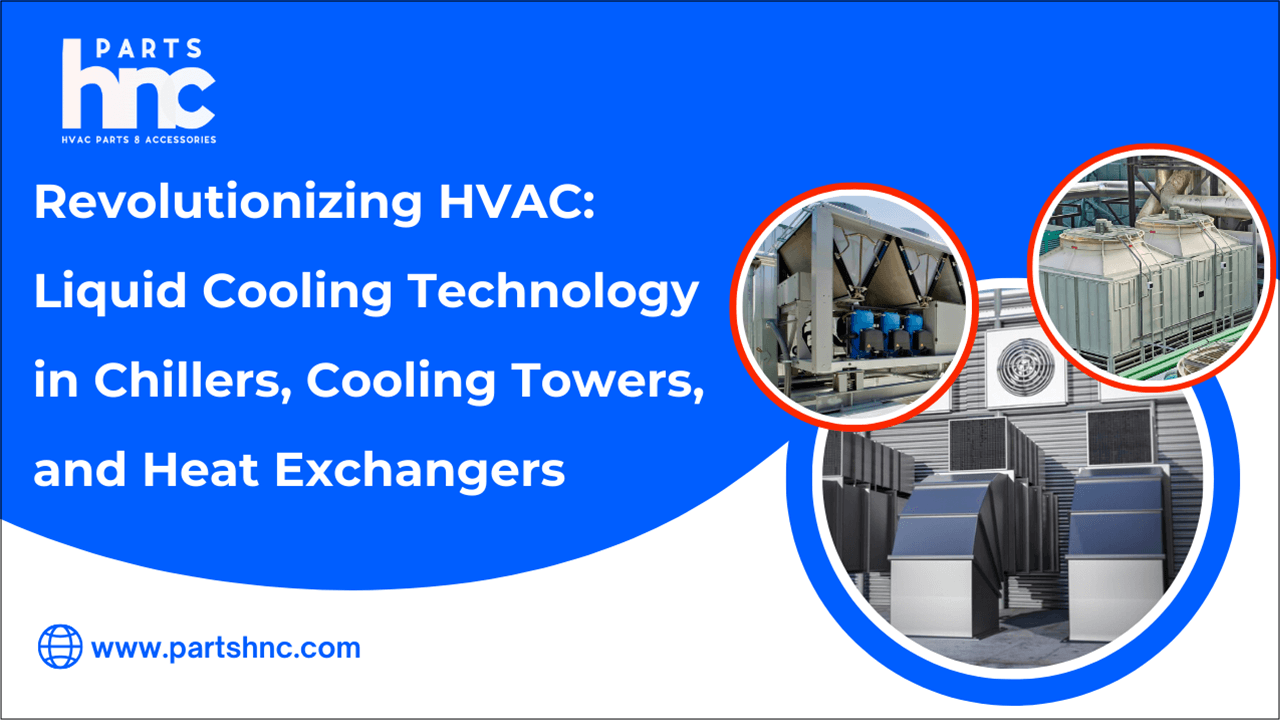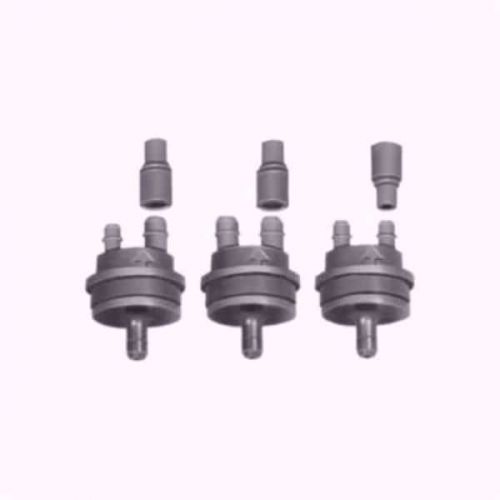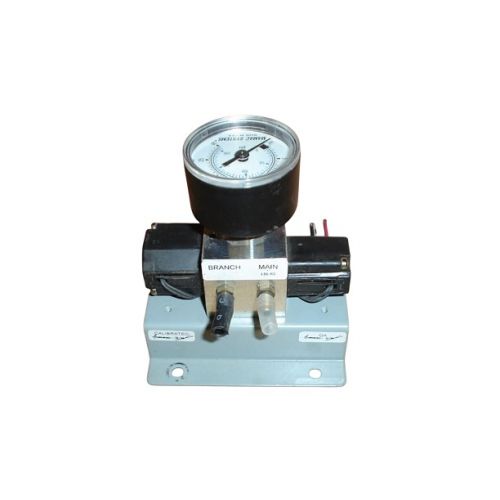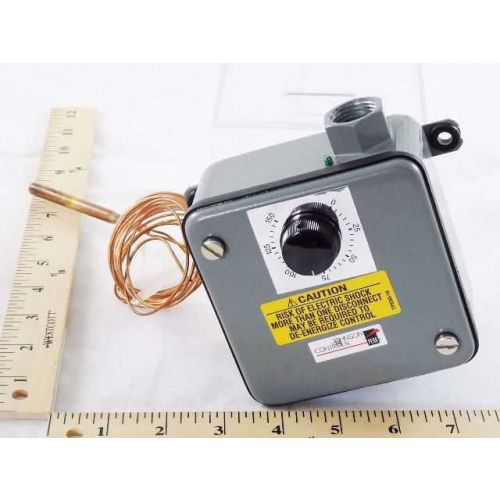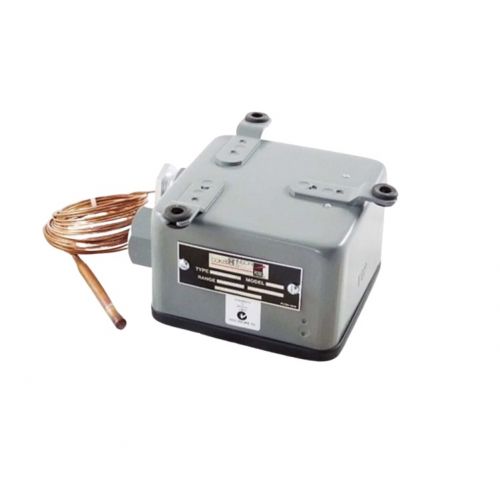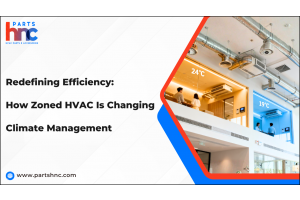Revolutionizing HVAC: Liquid Cooling Technology in Chillers, Cooling Towers, and Heat Exchangers
Revolutionizing HVAC systems, liquid cooling technology is transforming the efficiency and sustainability of chillers, cooling towers, and heat exchangers. As energy demands rise and environmental concerns intensify, traditional air-based cooling methods face limitations in performance and eco-friendliness. Liquid cooling, leveraging the superior thermal conductivity of fluids, offers a powerful alternative by rapidly dissipating heat with minimal energy consumption. This innovation not only enhances system reliability and reduces operational costs but also supports the shift towards greener building practices. By integrating liquid cooling into key HVAC components, industries and commercial spaces can achieve optimized temperature control, improved lifespan of equipment, and a significant reduction in carbon footprint. This advancement marks a pivotal step toward smarter, more resilient climate control solutions.
Understanding Liquid Cooling Technology in HVAC Systems
Liquid cooling is the process of removing heat from equipment or spaces by circulating a liquid coolant, typically water or specialized fluids, through the system. Unlike air cooling, which uses air to absorb and dissipate heat, liquid cooling leverages the superior thermal conductivity of liquids for faster, more efficient heat transfer. This leads to better cooling performance and often lower energy use.
In HVAC systems, liquid cooling technology is primarily applied in three key components:
-
Chillers: Machines that remove heat from a liquid through vapor-compression or absorption refrigeration cycles, effectively cooling the system.
-
Cooling Towers: Structures that expel heat absorbed by water-cooled systems into the atmosphere, maintaining optimal temperatures.
-
Heat Exchangers: Devices that transfer heat between two or more fluids without mixing them, ensuring efficient thermal exchange and system protection.
By improving heat transfer and reducing energy consumption, liquid cooling is a vital innovation driving the future of HVAC systems.
Liquid Cooling in Chillers: Enhancing Efficiency and Performance
Chillers are the core of many HVAC systems, especially in commercial and industrial settings. Traditional air-cooled chillers use fans to dissipate heat, which can be energy-intensive and less efficient under high ambient temperatures. Water-cooled chillers, on the other hand, utilize liquid cooling to provide superior heat removal capacity.
How Liquid Cooling Optimizes Chillers:
-
Improved Heat Transfer: Water and other liquids have higher thermal conductivity compared to air, enabling chillers to remove heat faster.
-
Lower Energy Consumption: The enhanced heat exchange reduces the compressor workload, cutting down electricity usage.
-
Compact Design: Liquid-cooled chillers can be designed smaller, saving space in urban or congested environments.
-
Extended Equipment Lifespan: Efficient cooling reduces wear and tear on compressor components, lowering maintenance costs.
-
Quieter Operation: Liquid cooling typically generates less noise, beneficial for commercial buildings where noise pollution is a concern.
Emerging Technologies in Chiller Liquid Cooling:
-
Magnetic Bearing Chillers: These chillers use magnetic levitation to reduce friction, combined with liquid cooling to maximize efficiency.
-
Variable Speed Drives (VSDs): Paired with liquid cooling, VSDs optimize motor speed for energy savings based on cooling demand.
-
Eco-Friendly Refrigerants: Modern chillers integrate liquid cooling with refrigerants that have lower global warming potential (GWP).
Cooling Towers: The Power of Liquid Cooling for Heat Rejection
Cooling towers play a vital role in liquid cooling HVAC systems by expelling heat absorbed from chillers or industrial processes into the atmosphere. They function by transferring heat from the warm water returning from the chiller to the cooler outside air through evaporation.
The Role of Liquid Cooling in Cooling Towers:
-
Enhanced Evaporative Cooling: Water’s high heat capacity makes evaporative cooling highly effective for rejecting heat.
-
Energy Efficiency: Cooling towers enable chillers to operate at optimal temperatures, reducing compressor energy use.
-
Water Conservation Technologies: Advanced cooling towers incorporate liquid cooling designs that optimize water usage and minimize waste.
-
Material Durability: The choice of corrosion-resistant materials helps maintain efficient liquid flow and heat transfer over time.
Innovations in Cooling Tower Liquid Cooling:
-
Hybrid Cooling Towers: Combining evaporative and dry cooling to maximize efficiency and reduce water consumption.
-
Smart Controls: IoT-enabled sensors optimize water flow and fan speeds based on real-time cooling demand.
-
Drift Eliminators: Reduce water loss by capturing water droplets during the cooling process, improving sustainability.
Heat Exchangers: Critical Interfaces for Liquid Cooling Efficiency
Heat exchangers are essential in HVAC systems for transferring heat between fluids efficiently without mixing them. They are used to cool or heat air, water, or refrigerants, playing a crucial role in system performance.
How Liquid Cooling Revolutionizes Heat Exchangers:
-
Superior Thermal Transfer: Liquids facilitate more effective heat exchange than air, boosting system efficiency.
-
Flexible Design Options: Plate, shell-and-tube, and microchannel heat exchangers can all benefit from liquid cooling technology.
-
Reduced Footprint: Liquid cooling enables more compact and efficient heat exchanger designs.
-
Improved Reliability: Enhanced liquid flow control reduces fouling and corrosion, extending equipment life.
Latest Developments in Liquid-Cooled Heat Exchangers:
-
Microchannel Technology: Incorporates small, high-surface-area channels that increase heat transfer rates.
-
Advanced Coatings: Anti-corrosion and anti-fouling coatings improve performance and reduce maintenance needs.
-
Integrated Sensors: Real-time monitoring of temperature and flow rates optimizes liquid cooling efficiency.
Benefits of Liquid Cooling Technology in HVAC Systems
Liquid cooling technology offers numerous advantages across HVAC components, driving the transition toward greener, smarter, and more cost-effective cooling solutions:
-
Energy Savings: Liquid cooling improves heat transfer efficiency, significantly reducing energy consumption compared to traditional air cooling.
-
Lower Carbon Footprint: Optimized energy use reduces greenhouse gas emissions, helping buildings meet sustainability targets and regulations.
-
Improved Indoor Air Quality: By effectively controlling humidity and temperature, liquid cooling minimizes mold and allergen growth, enhancing occupant comfort and health
-
Space Efficiency: Compact liquid cooling equipment saves valuable floor and rooftop space, especially critical in dense urban environments.
-
Reduced Operational Costs: Lower energy use and fewer maintenance interventions translate to significant cost savings throughout the HVAC system’s lifecycle.
-
Scalability: Liquid cooling systems can be designed for various scales, from data centers and hospitals to large manufacturing plants, providing flexibility.
-
Quiet Operation: Unlike noisy air-cooled chillers, liquid cooling systems operate quietly, ideal for noise-sensitive environments like offices and hospitals.
-
Longer Equipment Life: Consistent and effective cooling reduces wear and tear on components, extending the lifespan of HVAC equipment.
Explore this article on eco-cooling simplified: how low-GWP units save energy explains the benefits of low-GWP refrigerants, which enhance energy efficiency, reduce peak demand, and lower carbon footprints in HVAC systems.
Challenges and Solutions in Implementing Liquid Cooling HVAC Systems
While liquid cooling technology offers numerous advantages, integrating it into HVAC systems comes with challenges that require careful management:
Water Quality Management
-
Scaling, Corrosion, and Microbial Growth: Poor water quality can cause deposits and microbial buildup that reduce system efficiency.
-
Impact on Equipment: Fouling decreases heat transfer and can lead to equipment degradation.
-
Preventive Measures: Regular water treatment, filtration, and continuous monitoring are essential.
-
Chemical Use: Application of corrosion inhibitors and biocides helps maintain system performance.
Initial Investment
-
Higher Upfront Costs: Liquid cooling systems often require greater initial capital investment.
-
Complex Equipment: More sophisticated components and installation increase expenses.
-
Energy Savings: Long-term operational savings offset higher initial costs.
-
Equipment Longevity: The Extended lifespan of components adds financial benefits over time.
System Complexity
-
Design Challenges: Proper design of pumps, piping, and controls is critical.
-
Operational Risks: Leaks, pump failures, and inefficiencies may occur without proper maintenance.
-
Skilled Workforce: Expert installation and routine upkeep are necessary for optimal system operation.
-
Monitoring: Use of sensors and monitoring tools helps detect issues early.
Environmental Considerations
-
Water Conservation: Responsible water use is vital for sustainability.
-
Chemical Reduction: Minimizing harmful chemical treatments reduces environmental impact.
-
Water Recycling: Implementing reuse strategies enhances eco-friendliness.
-
Regulatory Compliance: Following environmental guidelines supports sustainability goals.
Addressing these challenges ensures that liquid cooling HVAC systems operate efficiently, effectively, and sustainably.
Future Trends and Innovations in Liquid Cooling HVAC Technology
As energy efficiency and sustainability become top priorities, liquid cooling technology is advancing with several key innovations:
-
Integration with IoT and Smart Controls: Companies like Johnson Controls and Honeywell are deploying AI-powered sensors that continuously monitor liquid temperature, flow rates, and system pressure to optimize performance and predict maintenance needs, reducing downtime.
-
Use of Eco-Friendly Coolants: New coolants such as glycol-water mixtures and biodegradable refrigerants like HFOs (hydrofluoroolefins) are gaining traction, offering lower global warming potential and safer handling.
-
Enhanced Heat Exchanger Designs: Microchannel heat exchangers, widely used in data centers like Google’s facilities, provide increased surface area for faster heat transfer with a more compact design.
-
Hybrid Cooling Systems: Facilities such as Apple’s headquarters use hybrid systems combining liquid cooling with evaporative cooling, reducing both energy and water consumption effectively.
-
Additive Manufacturing (3D Printing): 3D printing is being utilized to create complex cooling channels in heat exchangers for aerospace HVAC systems, improving efficiency and reducing weight.
-
Waste Heat Recovery: Industrial plants in Germany have started capturing waste heat from liquid-cooled HVAC units to supply building heating, lowering overall energy usage.
These innovations demonstrate how liquid cooling continues to drive smarter, greener HVAC solutions worldwide.
Read this article on how the future of cooling: inverter technology in HVAC air conditioners delves into the energy efficiency, quieter operation, and longer lifespan of inverter-driven HVAC systems.
Final Thoughts
Liquid cooling technology is undeniably revolutionizing HVAC systems by dramatically improving the efficiency, sustainability, and reliability of chillers, cooling towers, and heat exchangers. As energy demands rise and environmental concerns intensify, adopting advanced liquid cooling solutions offers a smart, future-ready approach to optimizing thermal management, reducing operational costs, and supporting greener building practices. Embracing this technology is key to transforming HVAC into a more effective and eco-friendly industry.
Looking for high-quality HVAC parts to boost your liquid cooling system's performance? PartsHnC offers a wide range of components like compressors, heat exchanger coils, and cooling tower fans from top brands such as Carrier, Trane, and York, your one-stop source for HVAC excellence!
FAQs
How does liquid cooling improve the efficiency of chillers?
Liquid cooling provides faster heat transfer, reducing the compressor workload and energy consumption of chillers. This leads to lower operational costs and improved system reliability.
Why are heat exchangers important in liquid cooling HVAC systems?
Heat exchangers transfer heat between fluids without mixing them, enabling efficient cooling or heating within HVAC systems. Liquid cooling improves their thermal efficiency, reducing energy waste.
Is liquid cooling technology more energy-efficient than air cooling?
Yes, liquids have higher thermal conductivity than air, allowing faster heat removal and lower energy consumption. This makes liquid cooling a more efficient choice for HVAC applications.
Can liquid cooling systems reduce the carbon footprint of HVAC operations?
By lowering energy consumption and optimizing heat transfer, liquid cooling systems contribute to reduced greenhouse gas emissions. This aligns with sustainability goals in modern building management.


